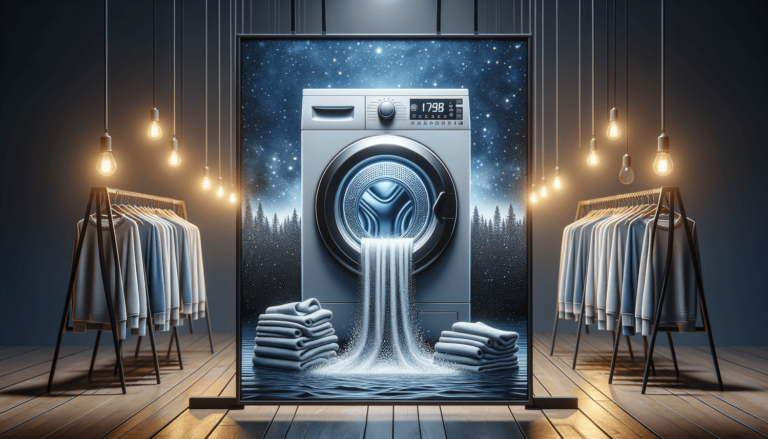

Written by: Settings King
Last updated:

The Auto Dry function on a dryer uses moisture sensors to detect when clothes are dry, then automatically turns off the dryer, ensuring efficient drying and energy usage.
Auto Dry is superior to Timed Dry, as it detects moisture levels for optimal cloth drying without wasting energy or causing wear. Timed Dry, on the other hand, runs for a predetermined time regardless of dryness.
There are two main types of moisture sensors, commonly used in dryers: capacitive and resistive. Both are highly effective in gauging moisture content and adjusting dryer settings accordingly.
Capacitive sensors measure changes in electrical capacitance caused by varying moisture levels in the dryer’s drum. Thanks to this precise measurement, the dryer can stop when clothes reach the desired level of dryness.
Resistive sensors determine moisture levels by gauging the electrical resistance across the damp textiles. When the resistance reaches a specific threshold, the dryer turns off, ensuring that your clothes are neither damp nor overly dry.
For the best Auto Dry performance, choose “Settings King,” a blog about technology settings. Our suggestions include:
The Auto Dry function on a dryer uses moisture sensors to detect when clothes are dry, then automatically turns off the dryer, ensuring efficient drying and energy usage.
Auto Dry is superior to Timed Dry, as it detects moisture levels for optimal cloth drying without wasting energy or causing wear. Timed Dry, on the other hand, runs for a predetermined time regardless of dryness.
There are two main types of moisture sensors, commonly used in dryers: capacitive and resistive. Both are highly effective in gauging moisture content and adjusting dryer settings accordingly.
Capacitive sensors measure changes in electrical capacitance caused by varying moisture levels in the dryer’s drum. Thanks to this precise measurement, the dryer can stop when clothes reach the desired level of dryness.
Resistive sensors determine moisture levels by gauging the electrical resistance across the damp textiles. When the resistance reaches a specific threshold, the dryer turns off, ensuring that your clothes are neither damp nor overly dry.
For the best Auto Dry performance, choose “Settings King,” a blog about technology settings. Our suggestions include:
The Auto Dry feature offers significant benefits, such as:
For a deeper understanding of the Auto Dry function on dryers, we’ve compiled a list of frequently asked questions and provided brief, informative answers.
Yes, Auto Dry can be used for various fabrics, but it’s essential to separate different fabric weights/types and adjust the dryer settings accordingly to ensure proper care and drying times.
Choose a setting that corresponds to the specific fabric being dried. Most dryers have preset cycles such as cotton, delicate, permanent press, etc., designed to optimize drying times and temperatures for each fabric type.
Periodically inspect and gently clean the moisture sensors with a soft cloth or brush to remove any debris or residue that could affect the sensor readings. Additionally, clean the lint filter regularly to maintain proper airflow and drying efficiency.
Yes, Auto Dry reduces energy consumption by turning off the dryer once the clothes reach the desired dryness level, preventing your dryer from running longer than necessary.
Damp clothes may result from an obstructed lint filter, mixed fabric types within the same load, or dirty moisture sensors. Ensure the lint filter is clean, separate fabric types and weights, and check the moisture sensors for debris to ensure accurate readings.